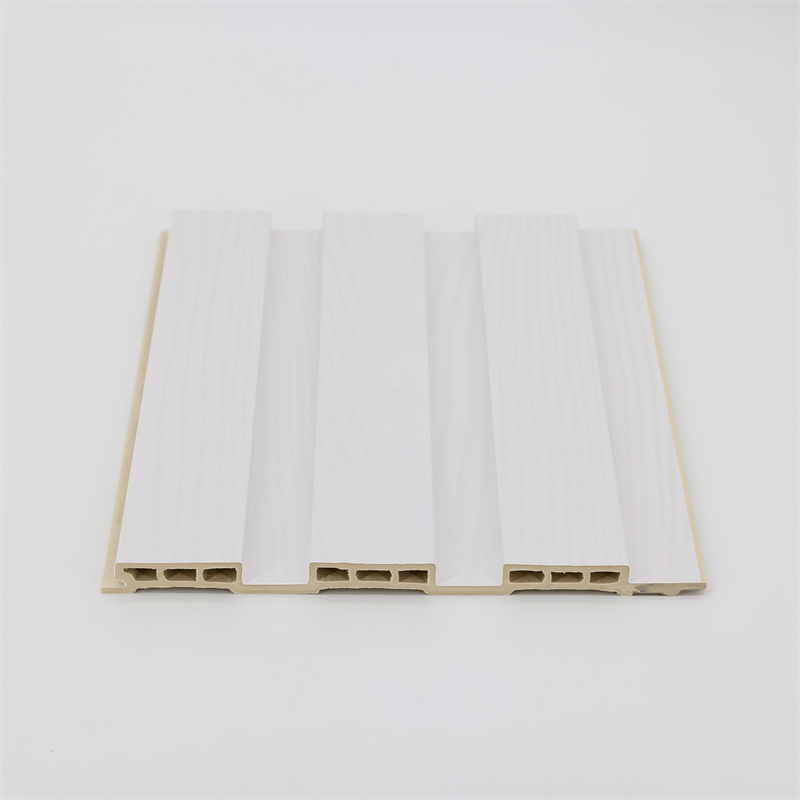Exterior cladding plays a crucial role in enhancing the aesthetic appeal and protecting the structural integrity of buildings.
In recent years, Wood-Plastic Composite (WPC) wall panels have gained significant popularity as an excellent choice for exterior cladding due to their unique blend of style, functionality, and sustainability.
This essay explores the various aspects of WPC wall panels, highlighting their advantages, applications, installation process, and environmental benefits.
I. Advantages of WPC Wall Panels:
WPC wall panels offer numerous advantages over traditional cladding materials. This section highlights some key benefits:
- Durability and Weather Resistance: WPC wall panels are highly durable and resistant to rot, decay, and insect damage. They can withstand extreme weather conditions, including heavy rainfall, intense sunlight, and temperature variations, without warping or cracking.
- Low Maintenance: Unlike natural wood or other materials, WPC wall panels require minimal maintenance. They do not require painting, sealing, or staining, saving time and cost over the long term.
- Aesthetic Appeal: WPC wall panels are available in a wide range of colors, textures, and designs, offering endless possibilities for architectural creativity. They can mimic the appearance of natural wood, stone, or other materials, adding elegance and sophistication to the building facade.
- Moisture and Mold Resistance: Thanks to their composition, WPC wall panels are resistant to moisture absorption, making them ideal for cladding applications in humid environments. They also inhibit the growth of mold and mildew, ensuring a healthy indoor environment.
II. Applications of WPC Wall Panels:
WPC wall panels find diverse applications in both residential and commercial settings. This section discusses some common areas where these panels are used:
- Residential Buildings: WPC wall panels are frequently employed in residential buildings for exterior cladding. They can transform the look of a house, giving it a modern and stylish appearance. Additionally, these panels are used for accent walls, garden fences, and boundary walls, creating a harmonious and appealing outdoor environment.
- Commercial Buildings: In commercial projects, WPC wall panels are utilized to enhance the visual appeal of offices, hotels, retail stores, and other commercial structures. They provide a contemporary and professional look while also offering practical benefits such as insulation and noise reduction.
- Public Spaces: Public spaces like parks, recreational areas, and educational institutions can benefit from the installation of WPC wall panels. These panels can be used for cladding exterior walls, creating attractive facades that blend harmoniously with the surroundings.
III. Installation Process of WPC Wall Panels:
Proper installation is crucial to maximize the performance and longevity of WPC wall panels. This section outlines the general installation process:
- Surface Preparation: The surface to which the panels will be attached must be clean, dry, and free from any loose debris. Any existing cladding or paint should be removed, and the surface should be leveled and even.
- Framing and Alignment: A sturdy framework is essential to support the WPC wall panels. The framing must be properly aligned and securely fixed to the building structure. It should provide adequate support and spacing for the panels.
- Panel Installation: The panels are typically installed horizontally or vertically, depending on the desired design. They are attached to the framing using screws or clips, ensuring a secure and uniform installation. Care should be taken to maintain consistent spacing between panels for a visually appealing finish.
- Finishing and Maintenance: After the panels are installed, any visible gaps or joints can be filled with appropriate sealants or trims. Finally, a routine maintenance schedule should be established to keep the panels clean and in good condition.
IV. Environmental Benefits of WPC Wall Panels:
WPC wall panels offer several environmental advantages, making them a sustainable choice for exterior cladding. This section discusses these benefits:
- Use of Recycled Materials: WPC wall panels are manufactured using a combination of wood fibers and recycled plastic materials. By utilizing recycled content, these panels help reduce waste and conserve natural resources.
- Reduced Carbon Footprint: Compared to traditional cladding materials, WPC panels have a lower carbon footprint. The manufacturing process requires less energy and produces fewer greenhouse gas emissions, contributing to a greener environment.
- Longevity and Reusability: WPC wall panels have a longer lifespan compared to traditional wood or other cladding materials. They are highly durable and can be recycled or repurposed at the end of their life cycle, minimizing waste generation.

WPC wall panels offer a winning combination of style, functionality, and sustainability for exterior cladding applications.
Their durability, low maintenance requirements, and versatility make them an attractive choice for both residential and commercial buildings.
Furthermore, the installation process ensures a secure and visually appealing finish.
With their environmental benefits and ability to mimic natural materials, WPC wall panels are a promising solution that meets the evolving needs of the construction industry.
As architects, designers, and builders continue to explore innovative and sustainable building practices, WPC wall panels are poised to play a significant role in shaping the future of exterior cladding.


